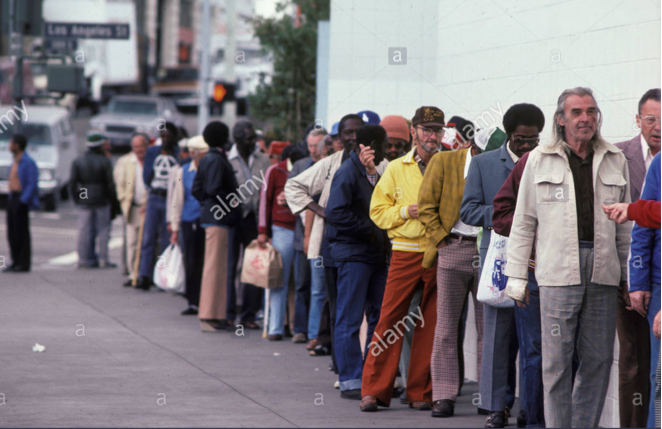NEWS PULSE - According to a first-of-its-kind analysis of the homeless population in Los Angeles County, nearly half of the population that experiences homelessness in a year is homeless for less than a month, underscoring just how precarious housing and employment are in Southern California.
While chronically homeless people are often the face of homelessness in Los Angeles County, this analysis shows that far more of the county’s residents fall in and out of homelessness over time, often living in their cars, in a temporary shelter or on the streets for days, not years.
The Economic Roundtable, a Los Angeles-based think tank, developed an innovative methodology combining 26 data sources for the report, “Escape Routes: Meta-Analysis of Homelessness in L.A.” It provides information for county and city officials as well as social welfare providers about how to target those most likely to become chronically homeless before the problem is catastrophic.
“Housing alone is not enough to end homelessness. The steady flow of new people into chronic homelessness keeps moving the goalposts back,” said Dan Flaming, president of the Economic Roundtable. “Over two-thirds of newly homeless individuals are working or actively looking for a job. Housing is key to solving this crisis, but by providing additional help, including jobs, during the first chapter of homelessness, we can dramatically stem the flow of people into chronic homelessness.”
The report found that a subset of each cohort of newly homeless individuals has identifiable risk factors that elevate their risk of becoming chronically homeless. If we intervene early with those high-risk individuals, fewer people will become chronically homeless.
Just a 10 percent increase in the rate of people who find early exits from homelessness could reduce the number of people who become chronically homeless by almost half.
“Although we learn more every day about homelessness: who becomes homeless, how they become homeless, how we can prevent people from falling into homelessness and how to quickly re-house people if they do become homeless, we still have much to learn,” Los Angeles County Supervisor Sheila Kuehl said. “That makes the lessons in this report invaluable. The most significant finding is how important it is to intervene early with an array of supports – job assistance, transportation, temporary housing and childcare. If we increase our commitment to these upstream services, we might significantly reduce the number of men, women and children who experience homelessness.”
Homelessness results from system-wide failures and requires system-wide engagement. The homelessness response system can’t be the only system providing thoughtful, targeted interventions to individuals who fall into homelessness. The complete package of system-wide services that are needed includes short-term to permanent housing subsidies, skill development, employment, child care, transportation, help in resolving justice system issues, and integrated health and behavioral health care.
"Homelessness is a moral crisis which will define our civic legacy in the eyes of future generations," Supervisor Mark Ridley-Thomas said. “With Measure H, we can scale up our compassion and our innovation. This report gives us valuable insight into who is most at risk of falling into homelessness and will help us target our Measure H resources in the most effective way."
The report cautions against diverting resources from housing chronically homeless individuals and recommends expanding parallel efforts to intervene early with targeted help that will reduce the flow of people into chronic homelessness.
In many cases, helping homeless individuals get an anchor in the job market will require temporary or long-term employment subsidies, but this cost is much less than the cost of permanently subsidized housing. Job assistance will be targeted on individuals who would otherwise have high public costs if they remained homeless. Reductions in public costs are projected to offset employment costs.
“We need a system-wide response to homelessness. At United Way, we've invested for years in housing and ending chronic homelessness, and now we're integrating investments on employment to provide comprehensive help," said Chris Ko, director of Homeless Initiatives at United Way. "This includes funding in our newest RFP for employment initiatives that assist homeless and formerly homeless residents."
By far the most frequently given reason for homelessness is unemployment and lack of money–cited by 40 percent of homeless individuals. This factor is identified as the cause of homelessness more than twice as often as any other factor, including conflicts with family or household (19 percent), alcohol and drug abuse (17 percent) and mental health (13 percent).
Over a quarter of all homeless individuals had their first homeless episode when they were between 18 and 24 years of age. The report identifies a high level of interest in employment among young adults, and especially young parents, who account for a quarter of all homeless families with children. It highlights them as an important group to support in obtaining jobs, subsidized childcare and other needed assistance.
The Economic Roundtable is developing two screening tools to identify homeless residents at risk of chronic homelessness using statistical models applied to linked client records. One screening tool is for foster youth and the other is for employable adults.
(The Economic Roundtable is a nonprofit urban research organization based in Los Angeles that carries out large-scale data analyses to identify actionable solutions to social, economic and environmental problems. To learn more, please visit http://economicrt.org/.
The Conrad N. Hilton Foundation underwrote this research as part of its strategic initiative to eliminate chronic homelessness in Los Angeles County. To learn more, please visit https://www.hiltonfoundation.org/.)
-cw





